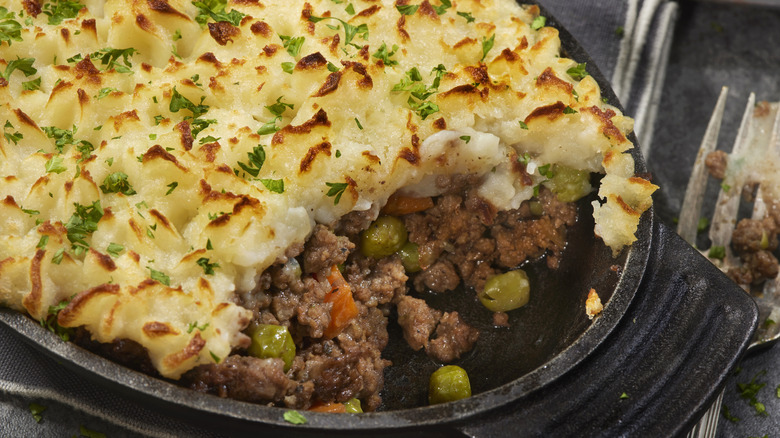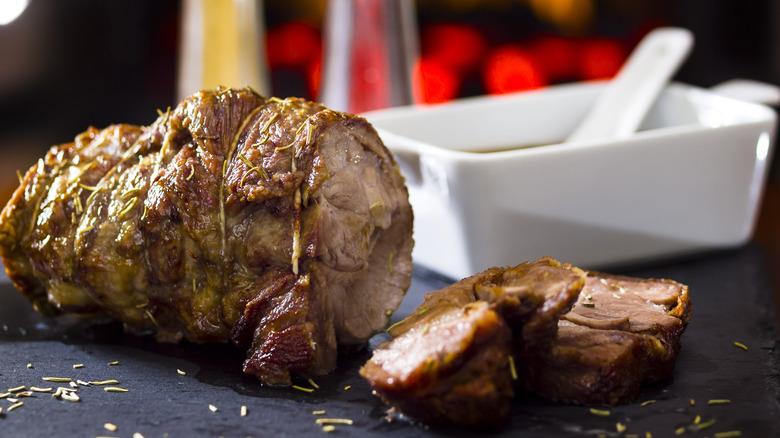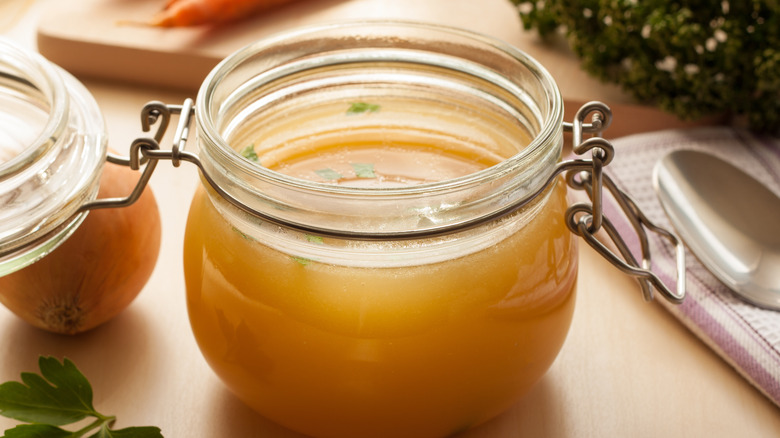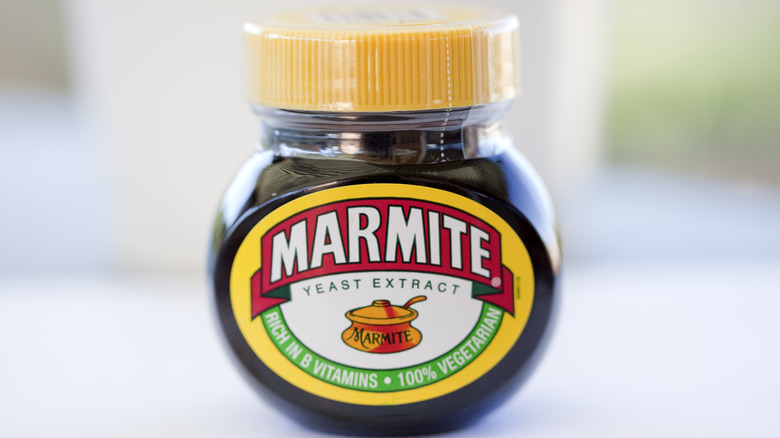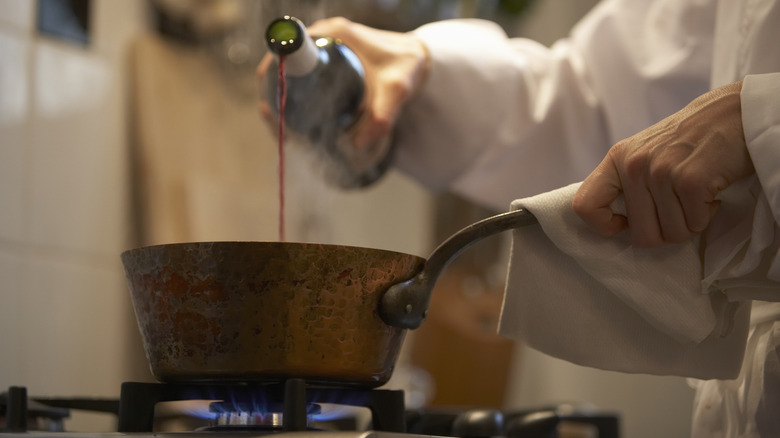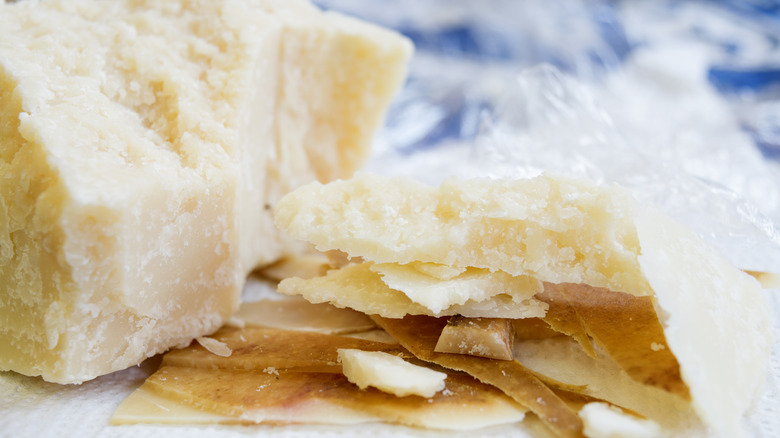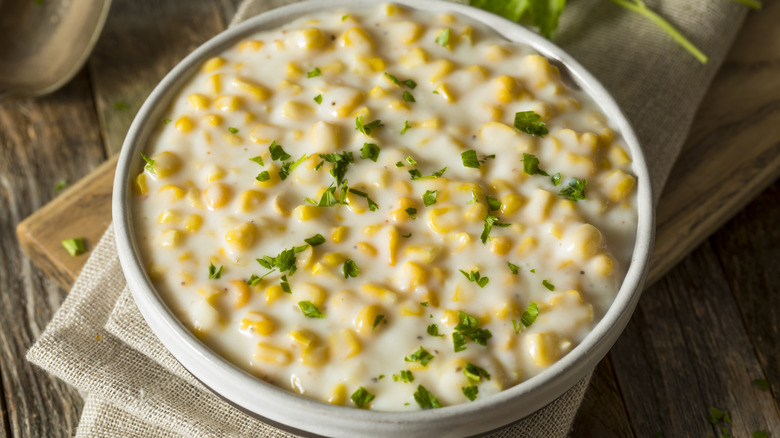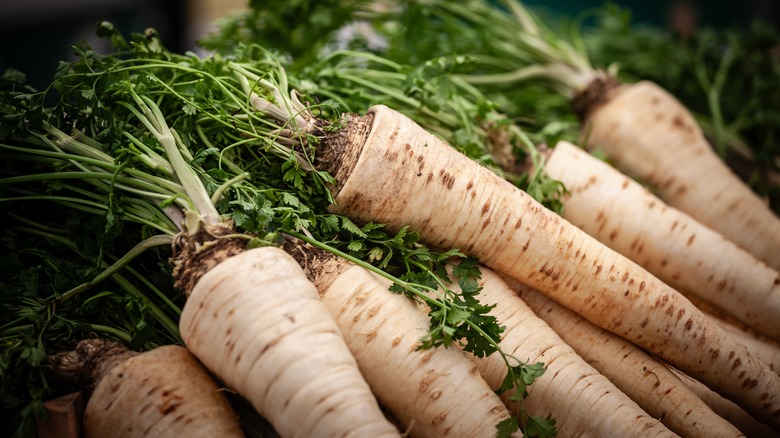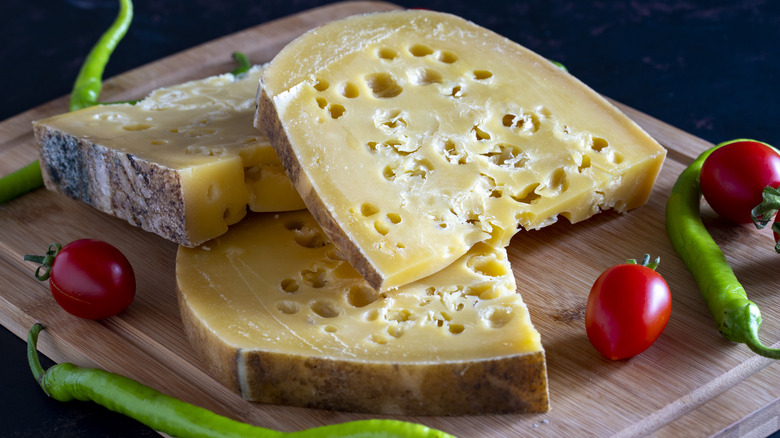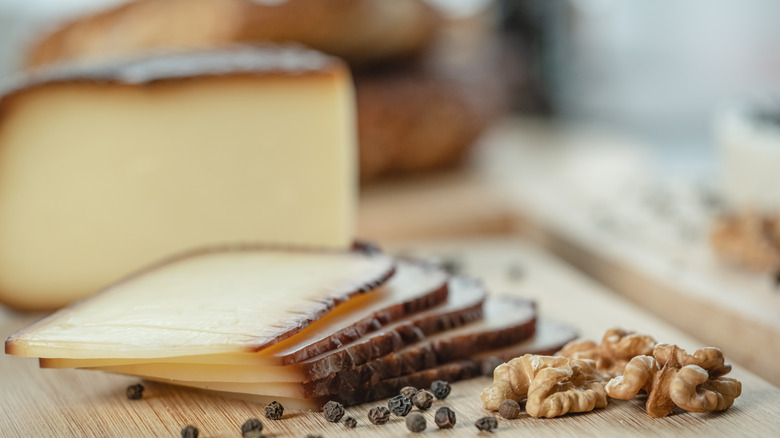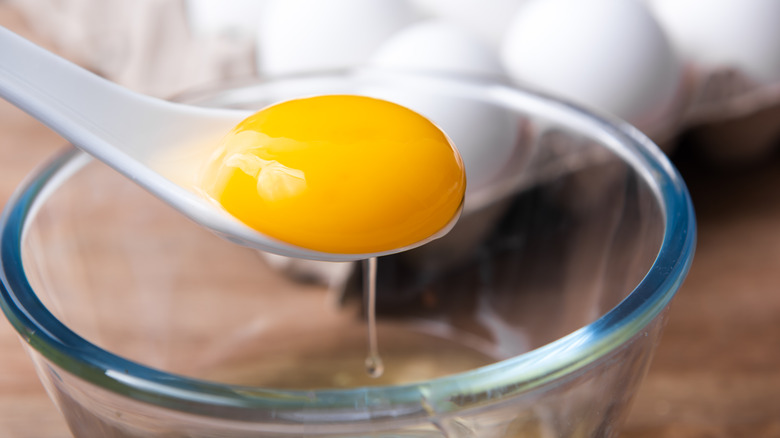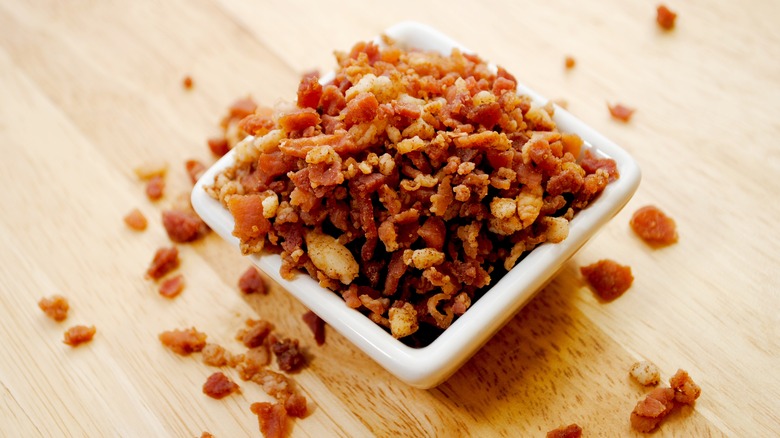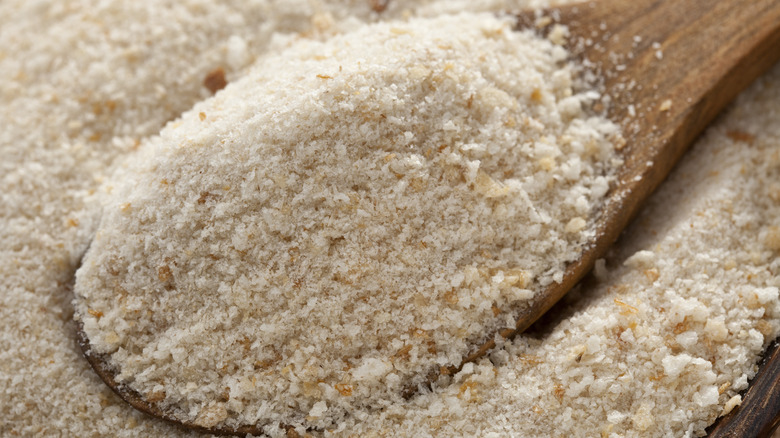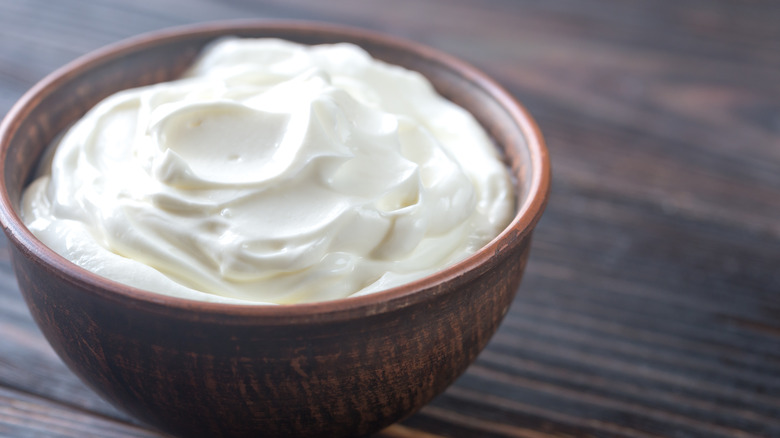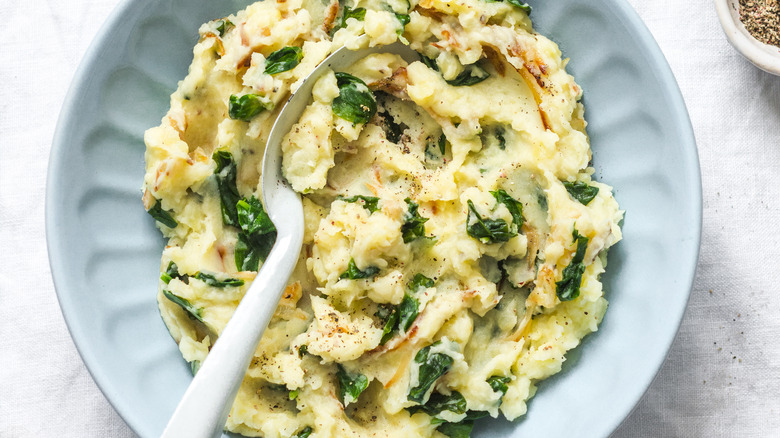15 Secret Ingredients A Home Chef Recommends For The Best Shepherd's Pie
It's something of a running joke that British cuisine is subpar slop, full of beige dishes that fail to satisfy sophisticated palates. Now, as a Brit myself, I can admit that we have some foods that might fall into that category, but a proper shepherd's pie is clear evidence against that generalization.
First, I need to address the elephant in the room – shepherd's pie is made with lamb, not beef. You can absolutely use beef instead and make a delicious dish, but that's called a cottage pie. As for the rest of the ingredients, I'm all for tweaks, additions, and experimentation. You'll want some veg mixed in with the meat, and a potato-based mash for the topping, but your specific recipe is up to you. With my background working and managing restaurants, and a passion for home cooking, shepherd's pie is a dish I've made countless times, and rarely are any two of my attempts the same. Sometimes I'll play around with the filling, other times I'll try something new with the topping. Occasionally, I'll get extra creative — or perhaps, brave is a better word — and look for ways to enhance both. Below is a list of secret ingredients that I've personally tried and tested over the years, whittled down to those that I guarantee will make your next shepherd's pie better than your last.
Leftover roast lamb
Shepherd's pie recipes typically call for ground lamb as the meat base. Not only does ground lamb keep the texture of the filling consistent, but it also cooks more evenly with the other ingredients.
Using bigger chunks of lamb from the leg or shoulder makes it trickier to cook all of the filling ingredients at the same time but there's a way around this. Using leftover roast lamb for your shepherd's pie is a real game-changer. For starters, you don't have to worry too much about the cooking times, as you just need to make sure your lamb chunks are reheated thoroughly. Reheating roast lamb on its own can be a little tricky as it often dries out too much, but this isn't an issue when you're cooking it with the juicy pie ingredients. The best part is that the leftover lamb will also be extra tasty, as it will have had more time to marinate in its seasonings in the fridge. The result is a pie with an extra meaty flavor boost and a more unique texture, with the lamb chunks contrasting beautifully against the creamy mashed potato topping.
Chicken stock
When making shepherd's pie, you always want to add some stock to your filling. Not only does the extra liquid keep the filling nice and moist and prevent the ingredients from drying out, but it also adds a great depth of flavor.
While you'd think that lamb stock would be the best pick for a lamb-based dish, I find chicken stock is the superior pick. Lamb stock is great for dishes where lamb is the star of the show, but its potency means that it can overpower more delicately flavored ingredients. Shepherd's pie is a dish that features a range of different ingredients, so chicken stock is more suitable for adding a level of complexity while allowing the other ingredients to shine through. There's nothing wrong with using store-bought stock or bouillon cubes but for the best results, it's worth making your own. While there are a few pitfalls you'll want to avoid making your own stock, it's actually a fairly straightforward process and you can use it to enhance a dizzying array of recipes.
Marmite
Most shepherd's pie recipes call for a few dashes of Worcestershire sauce in the filling mixture. The savory fermented sauce contains myriad ingredients that make it an ideal umami booster, but it's not the only ingredient for the job.
The famous British spread, Marmite, does an equally effective job of deepening the savory aspects of a recipe, especially shepherd's pie. I prefer marmite for a few reasons, but mostly because it has a slightly more concentrated flavor than Worcestershire sauce; it's less tangy and a bit saltier. Marmite is also a great substitute if you're making a vegetarian take on shepherd's pie, as most Worcestershire sauces contain fish. This also makes it ideal if any of your guests have a fish allergy. Depending on availability and your taste preferences, you may also want to give Vegemite a try. Marmite and Vegemite are similar but not identical – Vegemite has an even more pronounced umami flavor than Marmite, and it's slightly more bitter and less sweet-tasting.
Red wine
Adding a splash of red wine to stews and sauces is by no means a new trick, but I find it's commonly left out of shepherd's pie recipes. Ultimately, including a little red wine in your filling mixture offers all the same benefits as it does in the other dishes that call for it.
Red wine contributes a complexity of fruit and tannins to the meat mixture, giving it a richer taste profile. It's also slightly acidic which can help to balance out the fattiness of the lamb and tenderize the meat for a softer texture. There are a few things to bear in mind when selecting the ideal cooking wine. The most important is that you want to pick a style of wine to match the type of dish you're cooking — for savory recipes like shepherd's pie, you'll want a dry wine instead of a sweet one. In terms of quality, there's truth in the saying that you shouldn't cook with a wine that you wouldn't drink, although that doesn't mean you have to splurge on something expensive — you can find perfectly suitable cooking wines around the $10 mark.
Guinness
Ireland's national drink, Guinness, has been making its appearance in more than a few recipes in recent years. A dry Irish stout, Guinness is more interesting and versatile than you may think, showing up in both sweet and savory dishes thanks to its umami-boosting qualities and decadent notes of chocolate and coffee.
Guinness enhances shepherd's pie in a similar way that red wine does, albeit with darker, roastier flavors. It has a notably low hop profile that makes it well-suited to cooking, and a pleasant, balanced bitterness that isn't overpowering. The acidity and sugar content of the beer will help tenderize the lamb and cut through the fat, and the added liquid will improve the moisture content. That said, it's best to reduce the Guinness in your saucepan before adding the rest of your ingredients. This will help concentrate the flavors of the beer while removing some of the excess liquid that could lead to your filling becoming too watery.
Parmesan rind
When you finish up a wedge of Parmesan cheese, you more than likely throw it in the trash. I can't blame you, as I used to do the same until I learned that I was disposing of an incredibly effective cooking ingredient.
As it turns out, Parmesan rinds are the secret ingredient for extra creamy sauces. While some cheese rinds are made from wax or similar materials, Parmesan rinds are simply dried, hardened cheese. Letting the rind simmer in your sauce helps thicken it, giving it a much creamier consistency. From a flavor standpoint, the nature of Parmesan means it can work just as well in sauces that aren't cheese-based, such as bolognese, ragù, and, in this case, a shepherd's pie filling. The rind will imbue your filling mixture with nutty and salty characteristics while also improving the savoriness of the dish. Just remember to remove the rind before you start layering up your shepherd's pie — when your filling reaches your desired consistency and flavor, it's served its purpose and you can throw it away.
Creamed corn
Along with carrots and peas, corn is one of the most common vegetables called for in a shepherd's pie filling. The slightly sweet kernels are a welcome addition that add a satisfying crunch with every bite, but there's a way to take things up a notch.
Creamed corn is a delicious side dish all on its own, made by simmering sweetcorn kernels in cream and butter and thickening the sauce with flour. It's commonly seasoned too, bolstering the flavor with ingredients like garlic and often a pinch of spicy cayenne pepper. If I'm feeling particularly decadent, instead of adding corn directly to my shepherd's pie filling, I'll add a layer of homemade creamed corn, instead. You can use the creamed corn as the base of your pie, but I prefer sandwiching it between the meat filling and the mashed potato topping instead. This enhances the textural contrast between the layers, and guarantees a sweet and creamy explosion with every bite.
Parsnips
As simple as mashed potato recipes may be, there are plenty of ways to make them more interesting and tasty. Most of these tweaks will be just as effective when you're using the mash to top a shepherd's pie.
Adding parsnips to mashed potatoes is one of my favorite ways to improve the dish, as they introduce slightly sweeter and earthier flavors. As they're also a root vegetable, parsnips are similar enough to potatoes that they complement each other without ever feeling out of place. I tend to leave the skin on my spuds when I'm making mash as I love the extra flavor, I think they have a more interesting texture, and I appreciate the extra nutrients. You can do the same with the parsnips, or peel them if that's your preference. Including them in your mashed potatoes couldn't be simpler — just boil the parsnips along with your potatoes until they're both soft enough to mash together. Uncooked parsnips are slightly softer than potatoes, so if you find they're getting too soft before your spuds are ready, try adding them to the pot a few minutes after the potatoes.
Gruyère
No shepherd's pie is complete without generous helpings of cheese melted atop the potato topping. Given the dish's British origins, cheddar is normally the cheese of choice, but it's not the only option.
Gruyère is a superb alternative to cheddar if you're looking to change up your usual recipe. From a flavor perspective, it has a delightfully nutty, semi-sweet character that greatly complements the rest of the pie's ingredients. It's rich enough to stand out, but not so intense that it muddles or overwhelms the dish's more nuanced flavors. From a baking perspective, Gruyère is perfect as it melts nice and smoothly, enhancing the creaminess of the mashed potatoes. It also browns well, helping to form the crispy golden crust that all good shepherd's pies should have. If you like the flavor of Gruyère but prefer something a little milder, Emmental is a solid pick. Alternatively, if you want to enhance those flavors, opt for a well-aged Comté, as it has a sharpness to it that's reminiscent of a mature cheddar.
Smoked cheese
Ultimately, there aren't many limitations to the types of cheese you can use to top shepherd's pie. That said, you'll want to avoid varieties that have extremely intense flavors, like blue cheese, or cheeses that don't melt well, like feta or goat's cheese. If you're still looking to make your pie a little more interesting, you can always try a smoked version of your favorite cheese.
Smoked cheeses are essentially just cheeses that have been cured with smoke, and you can buy smoked versions of many classics, such as Gruyère, Gouda, and cheddar. Now I'll admit, I'm a complete sucker for smoky flavors, whether it comes from a peated scotch whisky, a hot cup of Lapsang Souchong, or smoked barbecue meat. If there's a way to enhance a dish with a hint of smoke to a dish, I'm going to give it a shot. Fortunately, it's a winning combo for shepherd's pie but moderation is key. Too much smoke overpowers the dish, so it's best to start by using a combination of smoked and non-smoked cheese and adjust the recipe next time if necessary.
Egg yolk
Whether you're making them for a side or to blanket a shepherd's pie, there's a secret ingredient that's guaranteed to make your mashed potatoes extra creamy. Adding an egg yolk to mashed potatoes is more about science than flavor, and while it will give your topping a richer flavor, you don't have to worry about it tasting eggy.
Egg yolks are an emulsifier. This essentially means they make it possible to combine two liquids that don't usually like being mixed together. In the context of mashed potatoes, the emulsifying properties of egg yolk allows the fats from the dairy components — usually butter and cream — to more effectively bind with the water-based liquids. The result is a more uniform texture, so you won't get the odd bite of dry or soggy potato. I tend to separate my egg yolks by hand, having had years of practice in the cocktail industry, but some folks find that too fiddly. Fortunately, you can find plenty of kitchen gadgets that make separating egg yolks easier.
Bacon bits
Regardless of how smooth and creamy your shepherd's pie potato topping is, I find it's always worth adding a little bit of textural contrast. You want something flavorful with a bit of crunch to it that complements the rest of the ingredients, which is why bacon bits are one of my go-to picks.
The smokey, meaty flavor of the bacon bits is a welcome addition to the rest of the pie's flavors. You've got two options here depending on your preferences. If you stir the bacon bits through your mashed potato topping, you'll find their flavor is better distributed throughout the dish. Alternatively, sprinkle the bacon bits on top before baking to give them a crispier texture and add to the visual appeal of the pie. However, you should be aware that many store-bought varieties of bacon bits don't even contain real bacon. They're fine in a pinch, but I generally prefer making my own, especially if I can get my hands on fatty, pre-cubed lardons. You can even fry the bacon first and use the grease to sauté your vegetables for an extra delicious flavor boost.
Breadcrumbs
If you want to add some extra crunch to your topping without changing the basic flavors of your shepherd's pie, breadcrumbs are an excellent choice. They're generally light enough that you won't ruin the creaminess of your mash, and they can help absorb excess moisture to prevent a soggy topping.
In terms of what type of breadcrumbs to add to your topping, you've got a few types to choose from. While you can make your own with stale bread and a food processor, I generally find this to be more hassle than it's worth. My personal recommendation is panko breadcrumbs — the Japanese-style crumbs are coarser than regular breadcrumbs and I find they offer a more interesting contrast to the potato. However, I do like to spruce them up a bit by mixing the panko crumbs with a generous sprinkling of parmesan and a few seasonings — typically salt, pepper, onion and garlic powder, and a dash of smoked paprika. When the mix is ready, I simply scatter it liberally over the top of my shepherd's pie before it goes in the oven.
Crème fraîche
While anyone who appreciates creamy mashed potatoes knows the secret is extra dairy, everyone has their own go-to ingredient. Milk, heavy cream, cream cheese, and sour cream all have their proponents, but there's one I find can't be beat — crème fraîche.
Now, some folks claim crème fraîche is essentially just the European version of sour cream, and while they are similar, there are some important differences. Both are the result of using bacterial culture to thicken and flavor cream, but where sour cream starts with a base of light cream, crème fraîche uses heavy cream. This means that crème fraîche has a higher fat content, which gives it a richer and more luxurious quality which is evident when used to make a shepherd's pie topping. Crème fraîche is also less tangy than sour cream due to its higher fat content and the type of bacteria used to produce it, so it pairs better with the other flavors in the dish. Plus, crème fraîche is less likely to curdle under high temperatures, so there's less risk of any culinary mishaps.
Spinach
If you're seeking a secret ingredient that will boost the flavor, texture, visual appeal, and nutrition of your shepherd's pie, look no further. Spinach achieves all of these, and it's versatile enough that you can add it to the filling or the topping.
Spinach wilts remarkably quickly, so if you want to include it in your shepherd's pie filling, you'll want to add it at the end. Introduce it to your filling mixture at the very end, about two to three minutes before you take the filling off the stove top. To use spinach in your pie topping, you can boil it with your potatoes before mashing everything together. Again, they won't need nearly as long in the hot water as your spuds. Add a hearty handful of the leafy greens to the pot when your potatoes are essentially done — just a minute should be enough before you can drain everything and start mashing.

